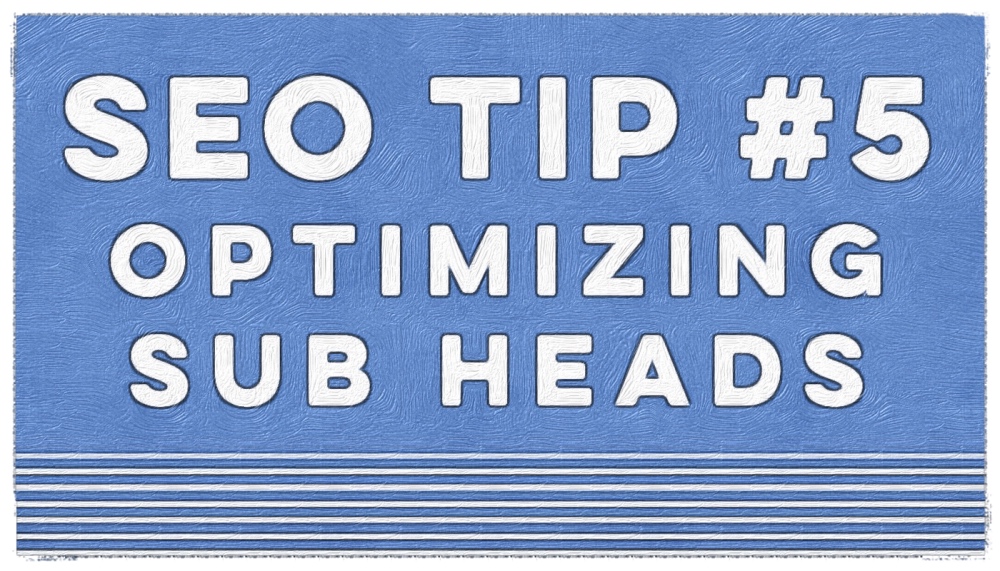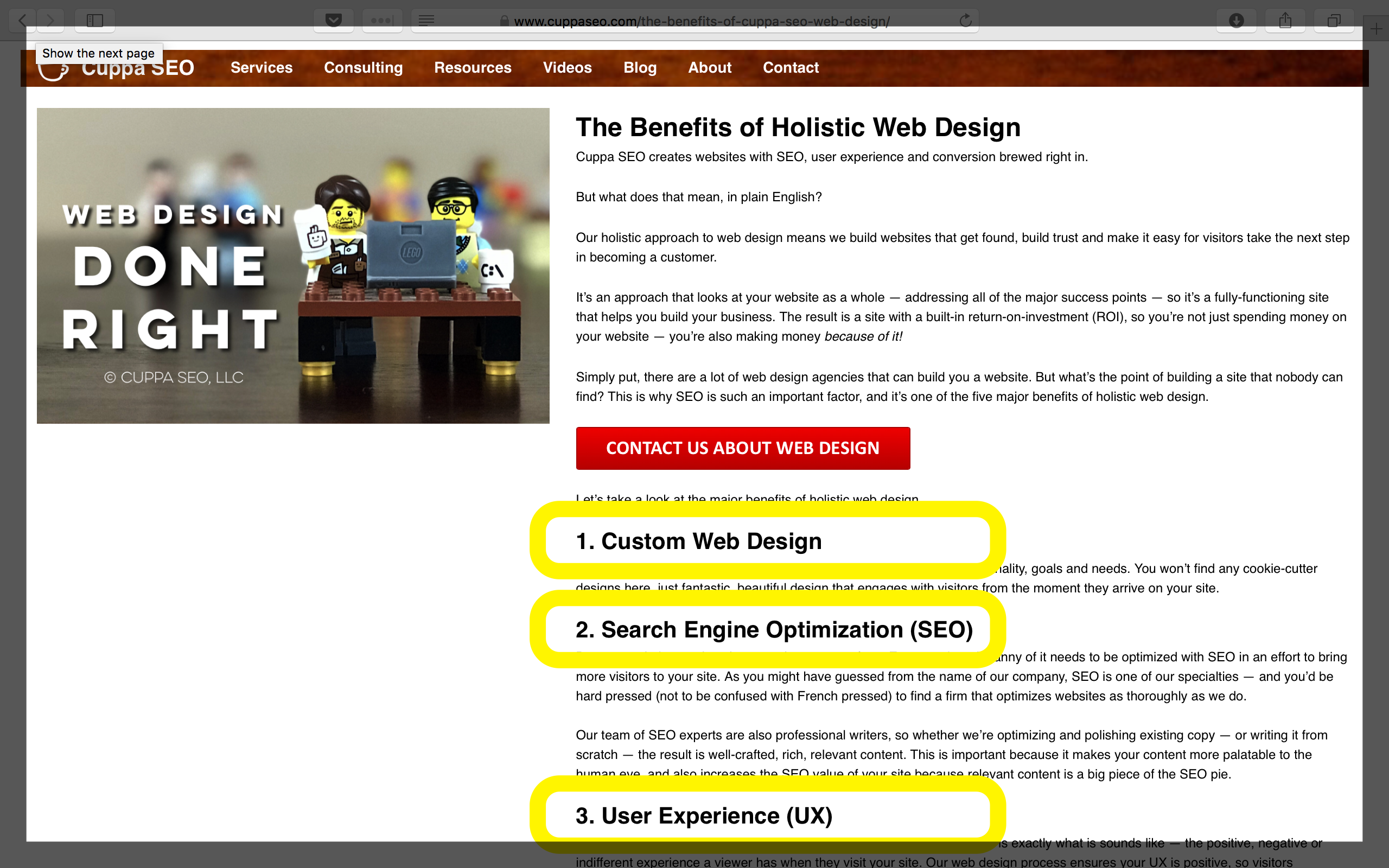 In our second installment of our SEO Tips series we discussed the importance of optimizing the main headline (also known as a “title” or “H1”) on a webpage or blog post. Today, we’ll take a look at optimizing sub headlines (also known as secondary headlines) on your website and blog.
In our second installment of our SEO Tips series we discussed the importance of optimizing the main headline (also known as a “title” or “H1”) on a webpage or blog post. Today, we’ll take a look at optimizing sub headlines (also known as secondary headlines) on your website and blog.
In more technical terms, a sub headline is anything that’s not an H1. This typically means we’re dealing with an H2, H3, and sometimes an H4 headline.
What this means
H2, H3, and H4 headlines are all sub headlines, with the H2 appearing the biggest, and an H4 appearing the smallest. In other words, the bigger the number after the “H” (which stands for headline), the smaller the headline actually appears on the page.
At first glance this may seem counter intuitive, but in addition to looking smaller on the page, something that’s an H2, H3 or H3 also gives direction to Google as to which sub headline should be given the most importance — and an H2 has more SEO value than a H3, and an H3 has more SEO value than a H4, and so on …
Just as we discussed with your main headline, your sub headlines should be clear and compelling to the human eye. And, whenever possible, you’ll want it to include an optimized keyword or keyword phrase in it, as well. I say “whenever possible,” because we never want to sacrifice the quality of our content for the sake of search engine optimization (SEO).
Sub Headlines Serve TWO Major Purposes
- Just like you see here, they can segment a page into bite-sized pieces, making it super easy for visitors to identify the content that’s most important to them.
- Sub headlines are also a key part of every page that need to be optimized. Just make sure the keyword phrase you use is specific to the topic of the page and/or the content that sits right below it.Here’s an example of what I mean …
Each of the highlighted sub headlines in this example clarify exactly what the content that lives below it is all about. In this case, my sub headlines are very straightforward (no romance), but that’s OK.
As a reminder, please remember that each web page or blog post should only have one H1 and one H2 headline. Multiple H3s or H4s are fine (like in the above example) — which is why they’re a great tool for segmenting content in a uniform, easy to comprehend way.
Next time we’ll tackle text links!
